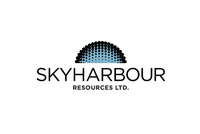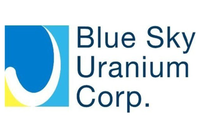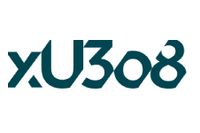“Its a pretty attractive supply and demand story,” Sadowski said at the 2015 AME BC Mineral Exploration Roundup. He added, “based on that we expect the uranium price to move to $70 per pound in the next two to three years in order to support these badly needed projects and new mines.”
At the 2015 AME BC Mineral Exploration Roundup, Raymond James analyst David Sadowski spoke to investors about supply and demand fundamentals in the uranium space, as well as the commodity’s outlook moving forward.
Sadowski explained that in the past the uranium market has overall been inventory driven — so much so that production exceeded demand due to the build up of material. Today, however, Sadowski believes that the market has shifted and is balancing out, becoming more of a production-driven market.
Uranium 101
Before investors can understand the current supply and demand situation, they must understand the basic ins and outs of the uranium market. One thing it’s key to note is that there are two main sources of uranium: primary mines that contribute roughly three-quarters of global supply and secondary sources that make up the rest. Primary supply comes directly from mines; the bulk of it stems from in-situ recovery (ISR) operations, with the remainder being from underground mining. Secondary supply — or already mined material — comes from three different sources: tailings re-enrichment and underfeeding, as well as government stockpiles.
With tailings re-enrichment and underfeeding, enrichment plants are essentially “squeezing” more uranium out of their contracted supply or running low-grade tailings through an enrichment plant again. In the case of government stockpiles, the United States and Russian governments are selling off supply to the marketplace.
As far as prices are concerned, the uranium spot price is seated at around $37 per pound of U3O8, while the long-term contract price is $49 per pound. Unfortunately, that means that incentive for production is just not there, and barring some ISR operations, producers are having a hard time justifying bringing new projects online without a predetermined contract price.
“We don’t think that developers will be signing new contracts until the price rises significantly” Sadowski told investors, adding that “there is no incentive for new mines to be brought online.”
Deficit by end of the decade
Sadowski noted that currently, 150 million pounds of mine supply are produced annually, which is a jump from the last decade. Going forward, however, he does not see much growth, and said that only 20 to 25 million pounds per year is what investors should expect, assuming prices remain where they are currently.
With producers lacking incentive for new mines, Sadowski anticipates flat growth from primary mines, with the exception of Cameco’s (TSX:CCO,NYSE:CCJ) Cigar Lake and the Chinese state-owned Husab mine, which are slated to be two of the world’s largest uranium mines.
On the secondary supply side, Sadowski looked back at Russia’s highly enriched uranium agreement with the US, noting that contrary to popular belief, the end of the program did not signal a rise in the spot price. That was of course due to tailings re-enrichment and underfeeding by utilities to make up the difference.
In terms of nuclear demand, France and the US take up the top two spots; Russia, China and South Korea round off the top five.
With China leading the way with the number of planned or proposed nuclear reactors, and India, Russia and South Korea following suit, demand for uranium for use in nuclear fuel is slated to expand in the next five years. Given those countries’ ambitions towards nuclear power, Sadowski believes that the market is looking at a 3-percent annual growth rate over the next 15 years, the largest growth seen since the 1970s.
What that means is that by the end of the decade, a significant deficit in uranium supply is expected.
“Its a pretty attractive supply and demand story,” Sadowski said, noting, “based on that we expect the uranium price to move to $70 per pound in the next two to three years in order to support these badly needed projects and new mines — and this is based on the factors I am describing: global demand growth like the 70s, insufficient mine growth because of the low incentive price, dwindling secondaries as a result of deficit in the year end.”
What about the near term?
Near-term price movement is unclear, but there will be several underlying themes at play in 2015 that will make positive price moment highly likely.
Sadowski explained that in 2015, the market will see the biggest jump in terms of nuclear power, with 10 to 12 gigawatts of new power hitting the grid. Along with that, China is slated to announce more nuclear builds and to make plans to enter the export market.
India also has the potential to be a key player in the uranium space, as it is currently second in the world for prospective new reactors. Sadowski expects more trade agreements, and perhaps construction announcements in the coming year.
However, of all the activity in the market, there are three key events that market watchers should be aware of, with the first being purchases made by Uranium Participation (TSX:U), the world’s only physically backed uranium fund.
“It’s already a tight market, [and] having Uranium Participation out there buying will tighten it further. They’ve just got a $200-million shelf they’ve filed for, so they’ve got some bullets in the chamber, and if they act on that they can buy 4 to 5 million pounds of uranium at the spot price, and that’s very significant.”
The second is the case of Coverdyne, a US conversion company, against the US Department of Energy (DOE). The firm is suing the DOE on the grounds that it is illegal to dump uranium supply into the market, creating a secondary supply source. Sadowski noted that if Coverdyne is successful in its suit, the uranium market will be even further tightened due to less supply being up for grabs.
Finally, the analyst pointed to Energy Fuels‘ (TSX:EFR,NYSEMKT:UUUU) recent acquisition of Uranerz Energy (TSX:URZ,NYSEMKT:URZ). This transaction, the analyst noted, is likely to create a new wave of consolidation in the sector.
Other near-term catalysts that could affect the market include Japanese reactor restarts and potential supply disruptions at Cigar Lake.
Where to invest
For investors looking for hot spots in the uranium market, Sadowski pointed towards the prolific Athabasca Basin in Northern Saskatchewan, where “sexy”‘ grades are always eye catching. In the region is none other than Fission Uranium (TSX:FCU), as well as Dension Mines (TSX:DML,NYSEMKT:DNN).
But the biggest advice that the analyst imparted is that when looking at prospects, investors need to “focus on margins, not grades. You can get the same type of operating margin potential in Africa, and other places around the world.” So with that in mind, he cautioned investors not to focus on only one region like the Athabasca Basin.
“Focus on the higher-quality juniors and producers, the ones with good news flow. But the balance sheet especially should be able to absorb the period of price weakness and leverage the rebound.”
Related reading:
Energy Fuels: Creating a Stronger Company for Shareholders
Consolidation in the US Uranium Market: The Way of the Future?






